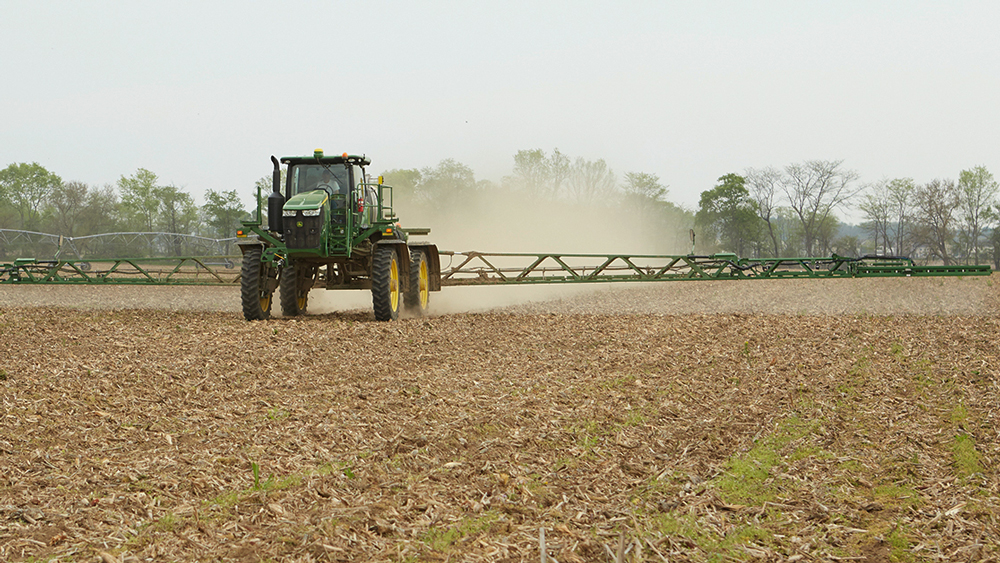Seven steps for spraying success

As we begin to prep for another crop year, take a moment to cover some important fundamentals to consider for any spray application this growing season. Below is a list compiled by technical experts at BASF that applicators should keep in mind:
1– Read and Follow the Label
Each herbicide label is different, but each contain important, product-specific information. They provide directions for how to use the product, alert you to any restrictions to follow, and inform you what you can expect the product to do. Read through each label for herbicides that you plan to apply to find specific application requirements including equipment specifications, application timing, use rates for your situation and more.
2– Sprayer Cleanout
Proper spray system hygiene is one of the most important steps you can take to reduce contamination issues and ensure better applications. Be sure to check the label for proper cleaning agents and specific procedures. It’s also important to clean equipment promptly after spraying to prevent drying and hardening of any product residues. It is important to not only clean the tank and hoses but also check filters, screens and nozzles as well.
3– Equipment Setup
One of the most important decisions an applicator should make before spraying is selecting the correct nozzle. First check to see what type and size nozzles are required as well as pressure and spray volume/acre. Different equipment and setups are required depending on what product you choose and how you intend to apply it. Choosing the correct nozzle and pressure will help ensure you get the right droplet size for on-target applications and best product performance.
4- Application Timing
Regardless if you are applying herbicides, insecticides, or fungicides, timing of application is critical for optimum performance. This is especially true for preemergence herbicides that must be in the soil before a weed comes up. It is also important for postemergence herbicides especially when targeting weeds that grow very quickly. Label directions will provide guidance to maximize the efficacy of applications. You can also get more localized recommendations from extension specialists, consultants and your local BASF representative.
5- Adjuvants and Tankmixes
Adjuvants are commonly used with crop protection products for several reasons and are often necessary to get the best performance. They can improve characteristics of the spray droplet such as size, how it spreads on leaves, and how it gets into plants. Different adjuvants serve different purposes, so selection of the correct adjuvant for the product being used is important.
In many cases it makes sense to apply more than one product at the same time to broaden the spectrum of control and improve resistance management. When doing so it is important to verify that the products are compatible. Some products require that tankmixes be included on an approved-tankmix list for them to be used together. When this is a requirement it will be specified on the label.
6- Weather Conditions
Weather impacts farming in many ways and one of those ways includes herbicide applications and their performance. One of the most important weather factors to consider for a successful application is the wind speed. Be sure to check your label requirements first before applying, as the label indicates the specific wind speed requirements and no products should be applied when the wind is blowing towards sensitive crops. To avoid off-target applications between the point of direct application and the closest sensitive crops, a buffer zone should be in place and the label will specify how large the buffer zone should be.
When determining the best time to spray, growers should know how to recognize temperature inversions and should not make an application when one exists. Also check the label to see if there are restrictions regarding the time of day an application can occur.
· Measure air temperature at 6 – 12 inches above the soil.
· Take a second measurement at 8 – 10 feet above the soil.
· An inversion exists if the measured air temperature at 8 – 10 feet above the soil is higher than the measured air temperature at 6 – 12 inches above the soil.
Spraying crop protection products during an inversion can result in the off-target movement of small droplets. A helpful tip to remember when measuring for a temperature inversion is that the measuring instrument should be shaded in order to not be influenced by solar heating.
7– Record Keeping
For best management practices, keep thorough records of your applications. Keeping records is not only a best practice but is also a requirement for any Restricted Use Product. The label will indicate everything you need to record and how long the records need to be kept for. Including specific details on product and rate applied, time of day, weather conditions and equipment calibrations are very important. Your records should also include when the tank was last cleaned prior to switching to a different chemistry. Communicate to your neighbors what you have planted and what chemistry you intend to apply throughout the entire season. If custom applicators spray your fields, communicate your records to them as well.
With the right tools for the job, applications can be made correctly. As always, be sure you’re reading and following all federal and state label requirements before you apply any product. For additional application questions and information, reach out to your local BASF representative or visit the BASF website at www.agriculture.basf.com.
Always read and follow label directions.
